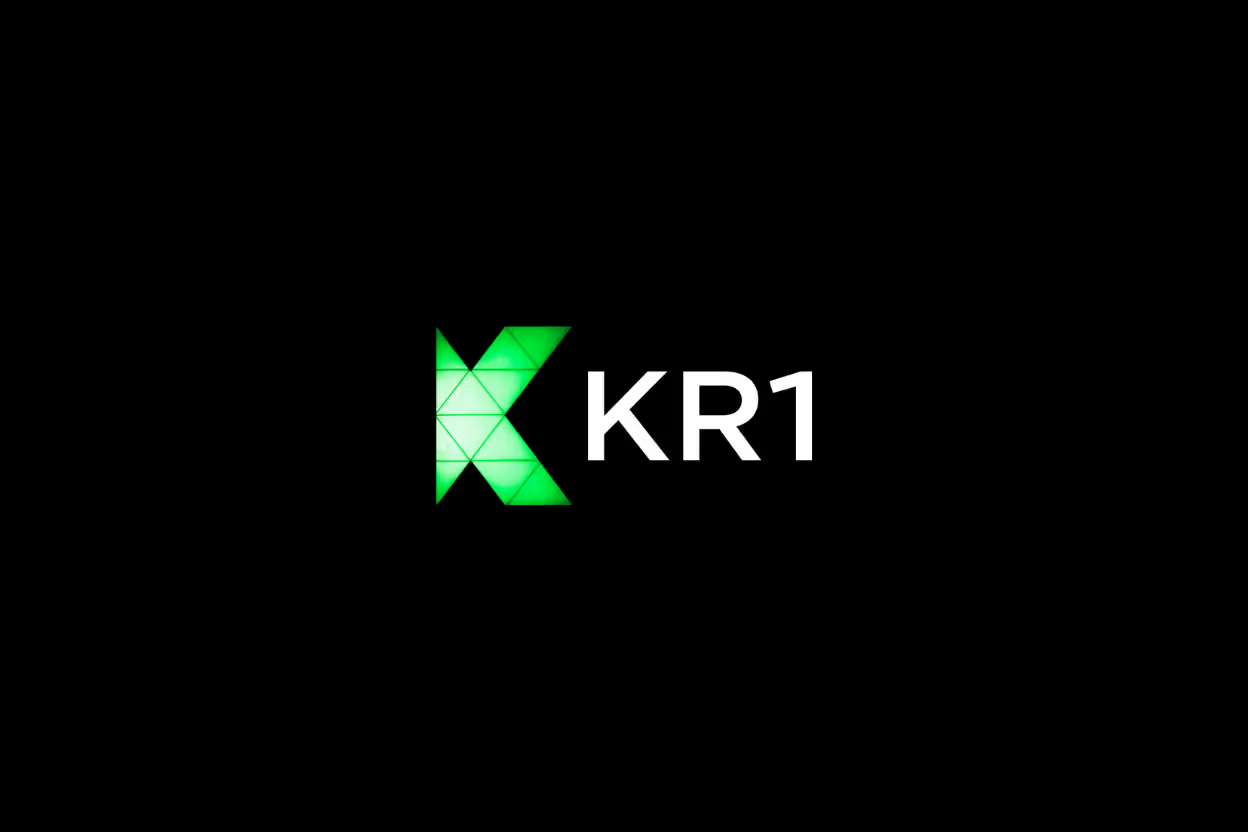The future of Web3 depends on solving a core issue: how people manage and prove their identity online. Current systems often fail to provide secure, user-controlled identities that carry across platforms and applications. Identity layers in blockchain offer a new approach, creating reusable, verifiable digital identities that users fully own.
Crypto founders, blockchain developers, and VCs should pay close attention to this shift. Identity layers promise to address gaps in user privacy, security, and interoperability. This post will explore why identity layers are the next critical step in building the infrastructure Web3 needs to reach its full potential.
The Evolution of Identity in the Digital Space
Understanding how identity has changed on the internet helps clarify why new identity layers are necessary. From the early days of Web2 to the emerging ideas in Web3, identity has mostly been managed by centralized platforms. These systems control your data, decide how you prove who you are, and regulate access. This creates tension between convenience, privacy, and personal control.
As the internet moves forward, the demand grows for identity solutions that give users ownership and privacy without compromising security. Let’s break down the current landscape and why it’s time to rethink digital identity.
Limitations of Current Web2 and Web3 Identity Solutions
Most people interact online today through centralized identity systems. Think social media logins, email accounts, or government-issued IDs stored in online databases. These systems come with serious drawbacks:
- Privacy concerns: Your personal data is stored by companies that may track, share, or even sell it without your explicit consent.
- Lack of user control: You have limited say over how your digital identity is used or shared. If a platform shuts down or bans you, you lose your identity there.
- Security risks: Centralized databases are attractive targets for hackers, making identity theft and data breaches common.
Web3 has tried to address some of these problems with projects focusing on decentralized identity. These include platforms that enable wallet-based authentication and self-sovereign identity (SSI) standards. However, these efforts are still facing hurdles:
- Limited interoperability — identities don’t easily carry across applications.
- Complexity for users who need to manage private keys securely.
- Early-stage infrastructure that hasn’t reached mainstream adoption.
In short, both Web2 and current Web3 identity solutions haven't fully delivered on privacy, control, and security.
The Need for User-Controlled Identity Layers
The growing awareness of privacy, data breaches, and censorship fuels a clear need: identity systems must put users in charge. Decentralized identity layers promise to do just that by:
- Returning control: Users own their data and decide when, how, and with whom to share it.
- Enhancing privacy: Identity layers can leverage cryptography so that users only reveal what is necessary, avoiding oversharing.
- Improving portability: A single identity can move seamlessly across different platforms without re-verification or repeated sign-ups.
- Increasing security: Removing central points of failure makes identity less vulnerable to hacks or manipulation.
Think of these layers like your digital passport that you alone carry and control — without depending on any one gatekeeper to grant access.
Could this mean your on-chain domains or Web3 profiles become universally recognized identity badges? Could these layers bridge decentralized apps and services, making your identity not just a login but a value-bearing asset?
Identity layers aim to empower users rather than platforms. This shift could transform how trust, reputation, and access work online.
By centering identity ownership with the individual, these layers set the stage for more secure, private, and user-friendly experiences, essential for the next big wave of Web3 innovation.
What Are Identity Layers and How Do They Work?
Identity layers provide the foundation for a new way to prove who you are online without relying on central authorities like governments or big corporations. Instead of your identity being stored and controlled by a platform, identity layers give users direct ownership and control. Think of them as a personal toolkit that helps you authenticate yourself safely across different services, all while protecting your privacy.
These layers rely on three key elements that work together to create trust, security, and user control:
Decentralized Identifiers (DIDs) and Their Role
Decentralized Identifiers, or DIDs, are the backbone of identity layers. Unlike traditional IDs issued by governments or companies, DIDs are created and managed without any central authority. Each DID is a globally unique identifier linked to cryptographic keys controlled by the user. This means you don’t need to trust a middleman to prove your identity.
Here's what makes DIDs important:
- They allow users to own their identity directly without registration or approval from a central body.
- DIDs work across different platforms, making your digital identity portable and interoperable.
- The connection between a DID and its owner is secured by blockchain or other decentralized technologies, which reduces risks of fraud or alteration.
In short, DIDs act like a unique digital fingerprint that only you control, providing a strong foundation for identity layers.
Verifiable Credentials and Trust Frameworks
Having an ID is one thing, but proving something about yourself in a trustworthy way is another. That’s where verifiable credentials come in. They are digital certificates issued by trusted entities, like a university or employer, which confirm facts about you — for example, your education or job history.
Verifiable credentials work like a digital badge, but with a key difference: you control what information you share. You don’t have to expose your entire identity; instead, you can show only what's necessary. This prevents oversharing and protects your personal data.
Trust frameworks support this system by defining the rules for issuing, verifying, and accepting these credentials. They ensure that when you present a credential, the recipient can trust its authenticity without contacting the issuer every time.
This approach makes it possible to:
- Prove qualifications or memberships without revealing sensitive details.
- Build trust in online transactions and services without centralized verification.
- Enable new use cases like age verification, professional reputation, or onchain domains linked to verified identity attributes.
Privacy-Preserving Technologies in Identity Layers
Privacy is a top concern in identity management. Identity layers use sophisticated tools to keep your information safe and private. Among them, zero-knowledge proofs (ZKPs) allow you to prove something is true without revealing the underlying data. For example, you can confirm you are over 18 without sharing your birthdate.
Selective disclosure lets you share only the parts of your identity relevant to a specific situation. Instead of handing over your full digital ID, you give out only what is needed, reducing exposure.
Other privacy tools include encryption and secure data storage methods that prevent unauthorized access. These technologies make decentralized identities more secure and practical for daily use, giving users confidence to adopt identity layers.
Together, zero-knowledge proofs, selective disclosure, and encryption:
- Protect your sensitive data from being leaked or misused.
- Support seamless interactions across multiple services while maintaining privacy.
- Reduce the risk of identity theft or profiling.
Identity layers combine these powerful tools to create an identity system that balances trustworthiness, security, and privacy — all in the hands of the user. This marks a major shift from today’s centralized, brittle identity models to something designed for the decentralized future.
Why Identity Layers Could Drive the Next Narrative Wave in Web3
Identity layers are set to redefine how users interact within Web3. They offer a unified approach that balances ease of use, security, and privacy, transforming how people sign in, prove their credentials, and engage with decentralized applications. This shift is not just about convenience; it’s about giving users real control over their online identities while unlocking new business opportunities and meeting regulatory demands. Let’s explore how identity layers can reshape Web3 from three key angles.
Transforming User Experience and Access Management
Identity layers simplify the clunky, fragmented process of signing into multiple platforms. Instead of juggling countless usernames and passwords, users gain a single identity that works across services seamlessly. This means:
- Faster sign-ins: Users authenticate once, reducing friction for access.
- Granular permissions: You decide what details to share with each app, improving privacy.
- Better personalization: Services can tailor experiences based on verified interests or attributes, making interactions more meaningful.
At the same time, identity layers strengthen security. Because identities rely on cryptographic proofs rather than passwords stored in centralized databases, the risk of hacks and data breaches falls dramatically. Users retain full control over their credentials, stored securely in wallets or private devices. Consider it like carrying a secure, digital keychain that you alone can unlock, rather than relying on a receptionist who might lose the keys or let just anyone in.
How will this change the average interaction? Imagine logging into your favorite Web3 app with your identity badge, instantly proving your membership in certain DAOs or ownership of onchain domains — all without exposing unnecessary personal information.
Enabling New Business Models and Decentralized Applications
With identity layers providing trusted, verifiable claims about users, new services and applications become possible. For example:
- Reputation systems: Verified identities can build reputation scores that carry across platforms, helping people establish trust in peer-to-peer scenarios.
- Decentralized finance (DeFi): Identity layers can support credit histories or KYC-compliant onboarding without centralized data silos.
- NFTs with verified provenance: By linking identity to NFTs' creators and owners, authenticity and value gain transparency.
- DAOs: Identity layers can assign voting rights and participation roles based on verified credentials, improving governance.
New business models emerge when identities carry value beyond login credentials. Verified identities can serve as passports to exclusive communities or services, driving user engagement and new revenue streams. Identity layers knit together previously isolated Web3 building blocks into more robust ecosystems.
If you’ve wondered how reputation or access control might work at scale in decentralized apps, identity layers offer a promising solution.
Addressing Regulatory and Compliance Challenges
Regulation is a constant in finance and online services. Identity layers present a way to meet KYC (Know Your Customer) and AML (Anti-Money Laundering) requirements while safeguarding user privacy. They do this by:
- Selective disclosure: Users share only necessary information—like proving age or nationality—without revealing full identities.
- Decentralized verification: Trusted verifiers issue credentials that users hold privately and present when needed.
- Auditability without exposure: Systems verify compliance claims without exposing sensitive data to all parties.
This structure helps bridge the gap between regulatory demands and decentralized ideals. Businesses using identity layers can onboard users more quickly, reduce fraud risk, and avoid the pitfalls of centralized identity databases vulnerable to breaches.
Meeting regulations without compromising personal freedoms will be critical for Web3’s broader adoption. Identity layers provide a practical framework that governments and enterprises can trust.
By improving user experience, enabling innovative use cases, and tackling regulatory issues head-on, identity layers are positioned to guide the next narrative wave in Web3. They could become the backbone for the user-controlled, privacy-first internet many expect. The question now is: how quickly will the ecosystem embrace them?
Challenges and Considerations for Implementing Identity Layers
Building identity layers that work well across Web3 faces several critical challenges. These identity solutions must fit into a complex environment where different blockchains, apps, users, and regulators all have varied needs. The path forward requires thoughtful design that balances technical, social, and legal factors. Here’s what to keep in mind.
Interoperability Across Chains and Platforms
One of the biggest hurdles is making identity layers work everywhere. In the current blockchain ecosystem, projects run on different chains that don’t always communicate with each other. Without shared standards, a user’s identity on one platform may be meaningless on another.
Adopting common frameworks for identity will be key. These standards ensure that decentralized identifiers (DIDs), credentials, and authentication methods are compatible across chains and applications. For example, if you prove your identity in one app, you should be able to use the same proof in a different Web3 service without starting over.
This interoperability boosts user convenience and unlocks the power of identity as a reusable agent across services. It’s like having one passport that lets you travel internationally instead of needing a new visa for every country.
However, achieving this level of compatibility is challenging because:
- Blockchain networks have different protocols, consensus methods, and data formats.
- Each platform may impose its own security or privacy rules.
- The ecosystem lacks universally accepted governance for identity standards.
Without interoperability, users face fragmentation that works against the goal of seamless identity management. The future depends on collaboration between developers, standards bodies, and communities to agree on shared approaches.
Balancing Privacy with Transparency and Security
Identity solutions must carefully balance privacy, transparency, and security — a complex tension. Users want to keep personal information private, but services need enough data to verify identities and comply with regulations.
Privacy-preserving technologies like zero-knowledge proofs allow users to prove facts without revealing full details. Selective disclosure lets people share only what’s necessary for each transaction. But implementing these technical protections requires careful policy support.
Regulators demand transparency and accountability to prevent fraud and illegal behavior. They often want access to identity data or audit trails. This conflicts with the ideal of user-controlled privacy.
Building identity layers means designing systems that can:
- Protect user data from exposure or misuse.
- Enable selective sharing of attributes rather than wholesale data dumps.
- Support compliance with financial and legal rules without centralizing data.
Striking this balance requires ongoing adjustment as laws evolve and technology improves. It’s not a one-time fix but a continuing process toward trust and usability.
User Adoption and Managing Complexity
Even the best identity layer is worthless if users find it confusing or hard to manage. Crypto wallets, private keys, and cryptographic proofs can overwhelm many people, blocking widespread adoption.
The solution lies in prioritizing user experience from the start:
- Design intuitive interfaces that guide users through identity setup and sharing.
- Educate users about the benefits and risks of identity layers.
- Automate key management or recovery options to reduce errors and fears of loss.
- Offer clear feedback on what data is shared and with whom.
Making identity layers approachable for non-technical users will be critical for adoption. Complexity must be hidden behind simple workflows. Developers can learn a lot from well-designed Web2 apps that keep onboarding painless.
With easier identity management, more people will feel confident using onchain domains or verifiable credentials. This adoption drives the network effect that can make identity layers mainstream.
Understanding these challenges shows why identity layer development needs careful teamwork between engineers, designers, and policy experts. The goal is to build a system that works technically, appeals to users, and meets outside expectations for privacy and security. When that happens, identity layers will have a strong foundation to support the next wave of Web3 innovation.
Conclusion
Identity layers represent a fundamental shift in how identities will be managed and controlled in Web3. They offer users true ownership, stronger privacy protections, and the ability to carry their identity across multiple platforms, solving long-standing issues of centralized control and fragmented systems.
For crypto founders and VCs, investing time and resources into identity layers is not just smart—it’s strategic. These layers unlock new business models, enable smoother compliance, and enhance user trust, all of which are critical as the ecosystem matures.
The future of Web3 will increasingly depend on identity systems that respect user sovereignty while supporting innovation. Consider how identity layers might fit into your next project and the role they could play in driving adoption and network effects.
What steps will your team take to incorporate identity solutions that empower users and secure data? The next narrative wave is ready—will you lead it?









